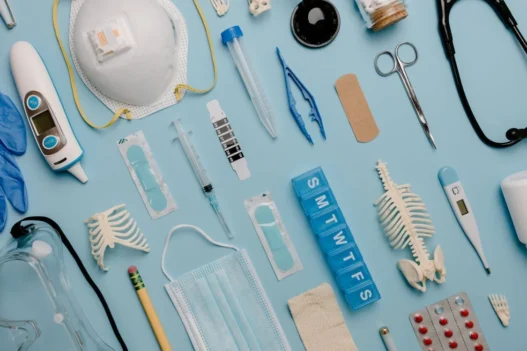09TL7ZZ refers to a medical procedure where a portion of the nasal turbinate, which helps control airflow and humidify the nose, is removed through either a natural or artificial opening in the nasal cavity. This procedure is typically done to improve breathing and alleviate symptoms related to nasal obstruction.
Table of Contents:
- 🔎 Clinical Indication
- 📋 Preparation
- 📖 Methodology
- 🩹 Recovery
- 🚨 Complexity & Risk
- 🔀 Similar Procedures
🔎 Clinical Indication
Resection of Nasal Turbinate, Via Natural or Artificial Opening may be performed to alleviate symptoms of chronic nasal congestion or difficulty breathing through the nose. This procedure can help improve airflow and reduce nasal obstruction caused by enlarged or inflamed nasal turbinates.
During the surgery, the surgeon may remove a portion of the turbinate tissue to create more space in the nasal airway, allowing for better airflow. This can help relieve nasal symptoms and improve overall nasal function, leading to increased comfort and quality of life for the patient.
📋 Preparation
Before undergoing 09TL7ZZ, patients typically undergo a consultation with their ENT specialist to discuss the procedure and any potential risks. They may also undergo pre-operative testing such as blood work and imaging studies to ensure they are healthy enough for surgery.
In the days leading up to the procedure, patients may be advised to stop taking certain medications that could interfere with the surgery or recovery process. They may also be instructed to avoid eating or drinking for a certain period of time before the surgery to reduce the risk of complications during anesthesia.
On the day of the surgery, patients will be asked to arrive at the hospital or surgical center at a specific time. They should wear comfortable clothing and leave valuables at home. Once checked in, they will meet with the surgical team and their anesthesiologist to go over the procedure one final time before being taken to the operating room.
📖 Methodology
During a 09TL7ZZ procedure, the nasal turbinate is removed through a natural or artificial opening in the nose. This allows for better airflow and can relieve symptoms such as congestion and difficulty breathing.
The procedure is typically done under local or general anesthesia and involves using special instruments to carefully remove the turbinate tissue. Patients may experience some discomfort and congestion following the procedure, but this usually resolves within a few days.
In some cases, resection of the nasal turbinate may be recommended to treat chronic sinusitis, nasal polyps, or other conditions that affect nasal airflow. It is important to follow your doctor’s post-operative instructions to ensure proper healing and optimal results.
🩹 Recovery
After undergoing a resection of the nasal turbinate, patients can expect some discomfort and nasal congestion in the days following the procedure. This is typically managed with pain medication and nasal decongestants.
Most patients are able to return to their normal activities within a few days after the resection. It is important to follow post-operative instructions provided by the healthcare provider to ensure proper healing and avoid complications.
🚨 Complexity & Risk
Performing a resection of nasal turbinate, also known as 09TL7ZZ, involves the removal of excess tissue in the nasal passage either through a natural or artificial opening. This procedure is complex due to the delicate nature of the nasal turbinate and the proximity to important structures in the nasal cavity.
Potential risks to patients undergoing this procedure include bleeding, infection, and damage to surrounding tissues. The nasal turbinate plays a crucial role in regulating airflow and humidity in the nose, so any disruption to its function can lead to breathing difficulties and other complications. It is essential for healthcare professionals to carefully assess and manage these risks to ensure the safety and well-being of the patient.
🔀 Similar Procedures
A medical procedure similar to the resection of nasal turbinate is septoplasty, which involves straightening a deviated nasal septum to improve breathing. Both procedures aim to address issues with the nasal passages that can hinder airflow and cause breathing difficulties. Septoplasty is often performed in conjunction with turbinate reduction to optimize nasal function.

